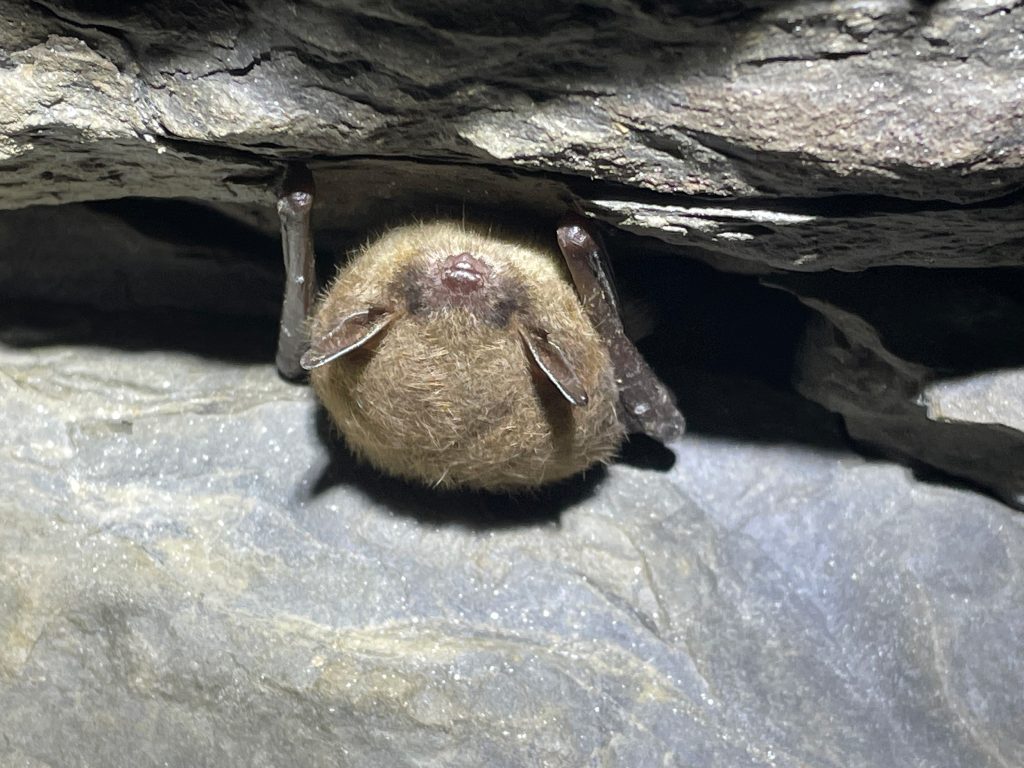
Little Brown Bat by DNR Biologist Megan Zagorski.
Many of us have put a lot of time and energy into gardening for pollinators – but have you considered gardening for bats?
An often underappreciated and misunderstood group, bats in Maryland are vastly important to the balance of our local ecosystems. Our 10 native species consume a vast quantity of insects, including many agricultural pests that plague food crops. Some studies estimate the services bats provide to farmers are worth more than $3.7 billion per year in the United States. Just one little brown bat, for example, can easily catch 1,000 mosquito-sized insects in an hour, providing an undeniably immense value to our communities. Besides eating bugs, bats also provide support for other species through their guano, a valuable natural fertilizer.
Sadly, bat populations are experiencing unprecedented declines. Factors affecting this include habitat loss, invasive species, accelerating climate change, and a devastating fungal disease called white nose syndrome. The struggle to support bat populations can be very disheartening; many concerned Marylanders have installed bat boxes in an attempt to provide them roosts where they may have been displaced. However, recent studies have found that great care must be taken in installing and maintaining bat boxes, or they can actually cause damage to the creatures we’re striving to protect (for more information on safe use of bat boxes, the University of Illinois provides a great how-to guide from the University of Illinois, or Bat Conservation International offers a handy video.
So, if not a bat box, what else can homeowners do to support our local bats? Much like planting native plants to support pollinators, we can create gardens that support bats! No, the bats won’t come live in our gardens, but they will come to dine on nocturnal insects that feed on and live in your native garden plants. The key is to choose plants that bloom or stay open at night, with light-colored or fragrant blooms being even more preferred. Trees like oaks can also be an important part of a bat garden, supporting the species that roost in trees, as well as creating habitat for countless insect bat snacks. Even something as simple as providing a clean water source (7-10 feet of width preferred by thirsty bats!) or leaving a dead tree on your property (provided it isn’t threatening your safety or structures) can be a huge boost for your bat neighbors. See below for a few suggested plants, and remember to check that you have the proper soil, water, and light requirements for each.
Trees/Shrubs
Black Willow (Salix nigra)
Buttonbush (Cephalanthus occidentalis)
Dogwood (Cornus florida)
Oak, any native species
Serviceberry (Amelanchier canadensis)
Wild Hydrangea (Hydrangea arborescens)
Herbaceous
False Solomon’s Seal (Maianthemum racemosum)
Joe Pye Weed (Eupatorium spp.)
Lyre-leaf Sage (Salvia lyrata)
Rudbeckia species
Sambucus species
Solidago species
Tiarella species
Trillium species
For more information, check out Bat Conservation International’s Guide To Gardening For Bats.
If you’d like to see an example of a bat garden, the Anacostia Watershed Association has one at their George Washington House site.

